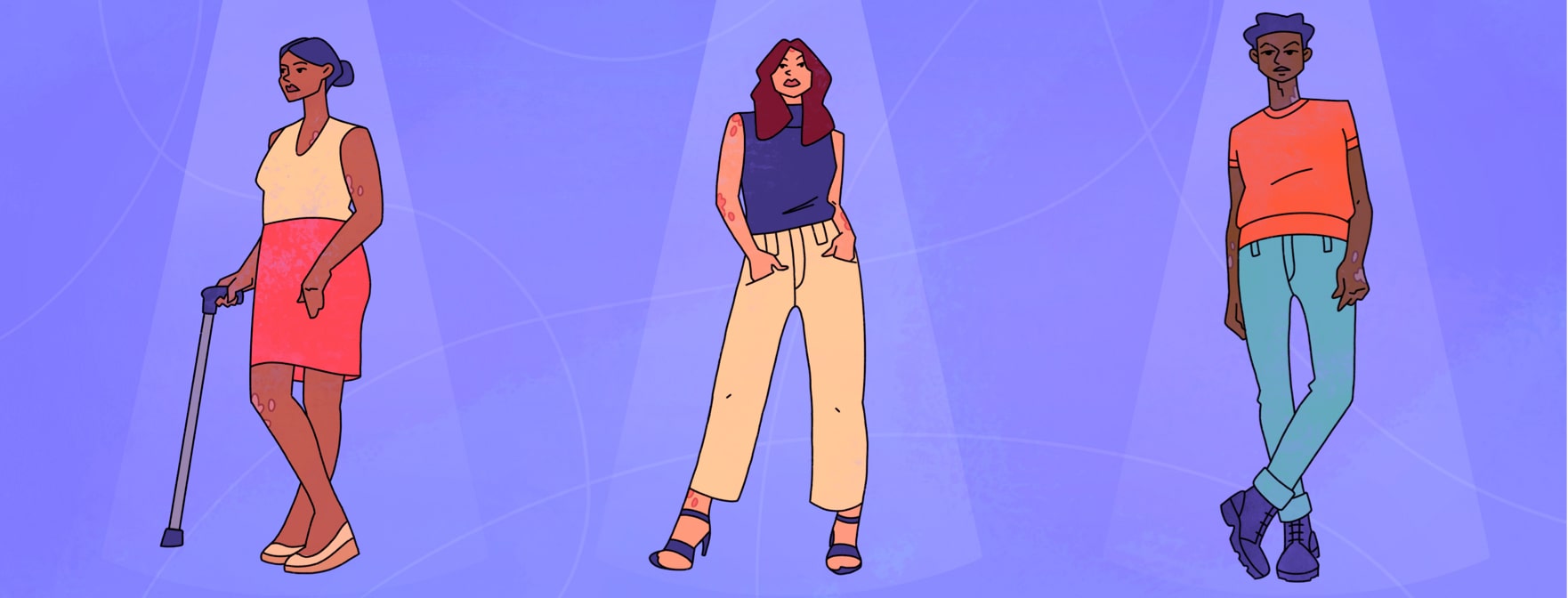The Impact of Psoriasis Representation in Fashion and Photography
I was perusing the Internet for a certain kind of black miniskirt. I wanted A-line, wool, with gold buttons. When I saw it, I clicked on someone’s blog, and there they were — showcasing themselves wearing several different skirts.
Imagine my surprise when I noticed they had psoriasis (PsO) on their legs! Their plaques were somewhat large, and noticeable, with red circles up and down their calves. They shared in another post about their psoriasis diagnosis. This is what further confirmed it for me.
Psoriais was just a part of the blog, not the whole blog.
I also absolutely loved that the blog post with the dream skirt(!) she shared had nothing to do with her skin or psoriasis. She didn’t even mention it. It just wasn’t up for discussion. It just was. Obviously, I think it’s so important that we discuss overcoming the fears of putting ourselves out there.
But I thought this was an amazing example of simply demanding space and attention without qualifying or explaining.
That said, I found myself wondering: How does this look to uninformed people? I wondered if people would wonder. I wondered if people would care. I wondered if people would mock her. And then it made me sad that I had to think like this.
Not only are skin conditions generally misunderstood and turned into worries of contagion or "dirtiness," growing up as a girl meant hearing a lifetime of talk about perfect skin and beauty as some inherent show of personal value.
Psoriasis representation does so much for the chronic-illness community
For me, I saw her blog, her passion, and her self-respect as a reflection of the chronic illness community and a great example of representation. I also loved her fashion choices, of course— and got a lot out of reading her blog.
In fact, I bought one of the black skirts that she was recommending!
It’s important that we see representations of skin conditions, disability, and chronic illness—in all facets. We need to see the disabled and the dynamically disabled. We need to see imperfect skin.
We need to see bodies that don’t fit into neat little boxes of what’s acceptable or unacceptable. Because the truth is, we are all beautiful and worthy.
There is still work to be done.
What’s more, we need to see a representation of disease and disability and neurodivergence without it being about those diseases or differences. We need to see people in wheelchairs showcasing makeup. We need to see people with psoriasis modeling short skirts.
Basically, we need to see people of all sorts, with all different kinds of bodies, doing normal things that people do. We can’t just be reduced or separated or boxed in.
But I acknowledge and understand that society hasn't completely come as far as we'd like — and that even advocates with high levels of visibility still deal with remarks that can make it uncomfortable. What do you think?

Join the conversation